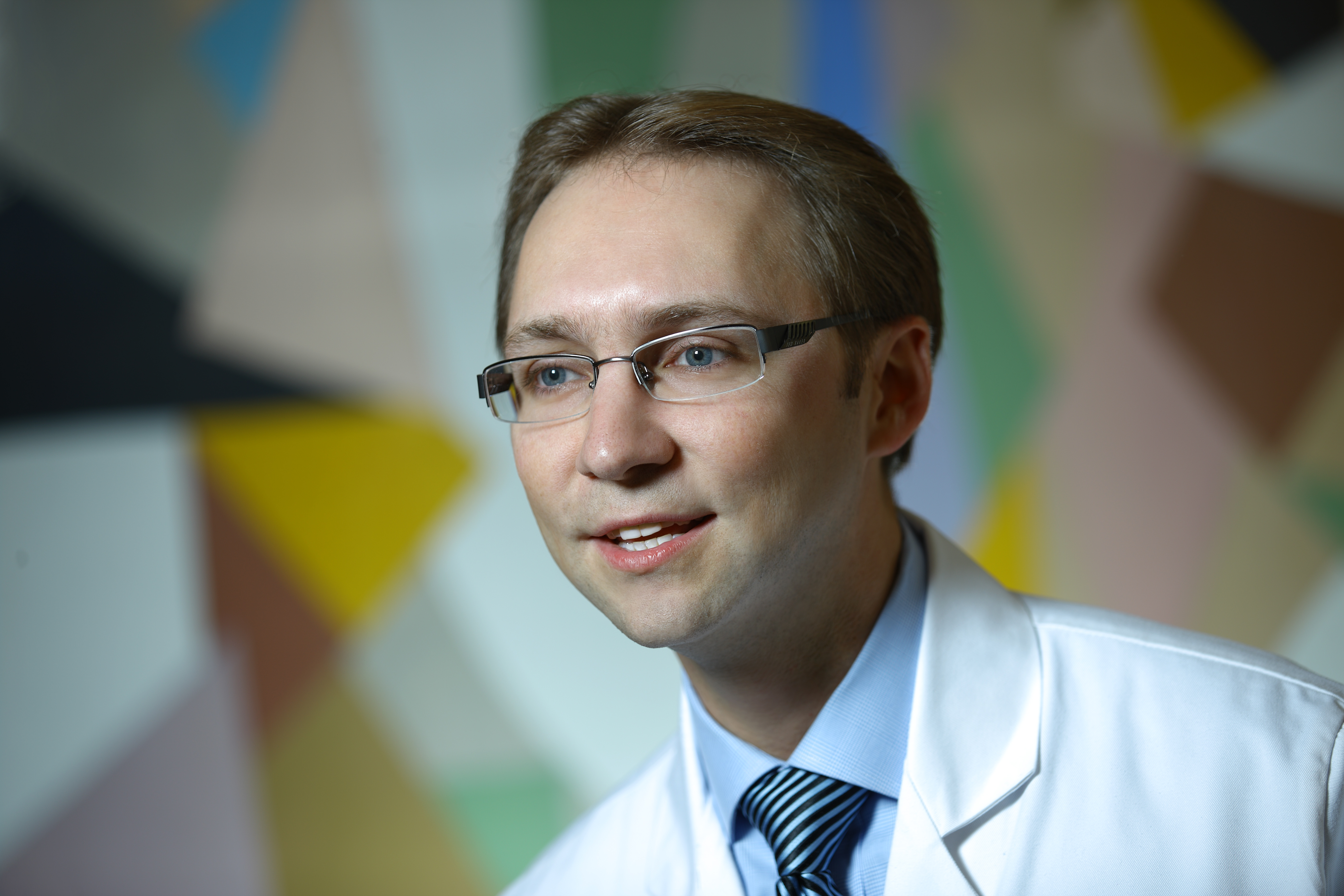

Ideas at Work
May 29, 2019
Data show that approach lengthens lives and saves health care dollars.
At most hospitals, diagnosis and treatment of lung cancer revolves around the care team, requiring a series of patient visits with medical, surgical and radiation oncologists and other specialists at different locations. Numerous appointments for tests, care decisions, and treatments are spread out over time. However, at the Johns Hopkins Kimmel Cancer Center’s Lung Cancer Multidisciplinary Clinic, providers follow a different model — where the care team revolves around the patient in one central location.
Studies show this new model lengthens lives while cutting health care costs. (See below)
Radiation oncologist Russell Hales, who serves as the director of the Thoracic Oncology Multidisciplinary Program, based at Johns Hopkins Bayview Medical Center, says he got the idea to start the clinic in 2011, during his first year at the Kimmel Cancer Center.

—Russell Hales
A downstream provider who typically sees patients after they’ve already met other care team members, Hales would often meet patients at their peak of frustration and stress. Many already had been through multiple appointments with other specialists. Information about their condition was doled out piecemeal as each test was completed, and providers sometimes gave conflicting information or repeated the same test because of a lack of communication. Even paying for parking repeatedly added to the hassle.
“I’d look into the eyes of these patients and see people who were scared to death about their cancer diagnosis and worried that we were extending this worry with each additional appointment,” he remembers. “Our approach is to take all those different appointments and bottle them up into a single clinic visit.”
Hales and his colleagues co-located medical, surgical and radiation oncologists at the same site. Their nurses — along with the technicians that perform imaging and other diagnostic tests, and all of their equipment — also share the same setting.
When patients arrive, they first meet with a resident, fellow or nurse practitioner to take a detailed history and perform a physical exam.
Next, the care team reviews each patient’s chart and decide on the best care to recommend, explains Josephine “Joy” Feliciano, medical director of the Thoracic Oncology Program.
“We’re not just discussing the treatments that they’ll need for their cancer stage, but what other resources we’ll need to enlist for each patient based on what we know about them — their medical history, social history, their life circumstances — because treatment isn’t just about the cancer itself,” Feliciano says. “It’s about how this patient might need rides to chemo, or that one might need us to coordinate care with their cardiologist because they have a pacemaker.”
Once the doctors conclude, they see each patient to discuss their recommendations for the next steps.
This single-day approach is highly unusual in cancer care, explains Hales. The exam, education session, lunch and tumor board meeting unquestionably makes for a long day.
“But patients get to leave in a day with a plan that would have taken weeks to develop elsewhere,” says Hales. “We pride ourselves on that long day, because so much gets accomplished.”
Better Survival Rates at a Lower Cost of Care
At the 2017 American Society of Radiation Oncology meeting, Thoracic Oncology Multidisciplinary Program Director Russell Hales and colleagues presented data comparing the outcomes of lung cancer patients who received care through the Johns Hopkins’ multidisciplinary clinic with patients who received their care outside of the clinic — either in the years just before the clinic opened or with individual providers through a more traditional care model. Their findings showed that one-year survival at the clinic was 82 percent, compared with 64 percent for patients treated outside the clinic.
Last year, Johns Hopkins radiation oncologist Ranh Voong presented additional data at the 2018 meeting, showing that the clinic provides a cost savings of 30 percent over traditional care — presumably because patients receive more streamlined planning and treatment, avoiding unnecessary appointments and tests

